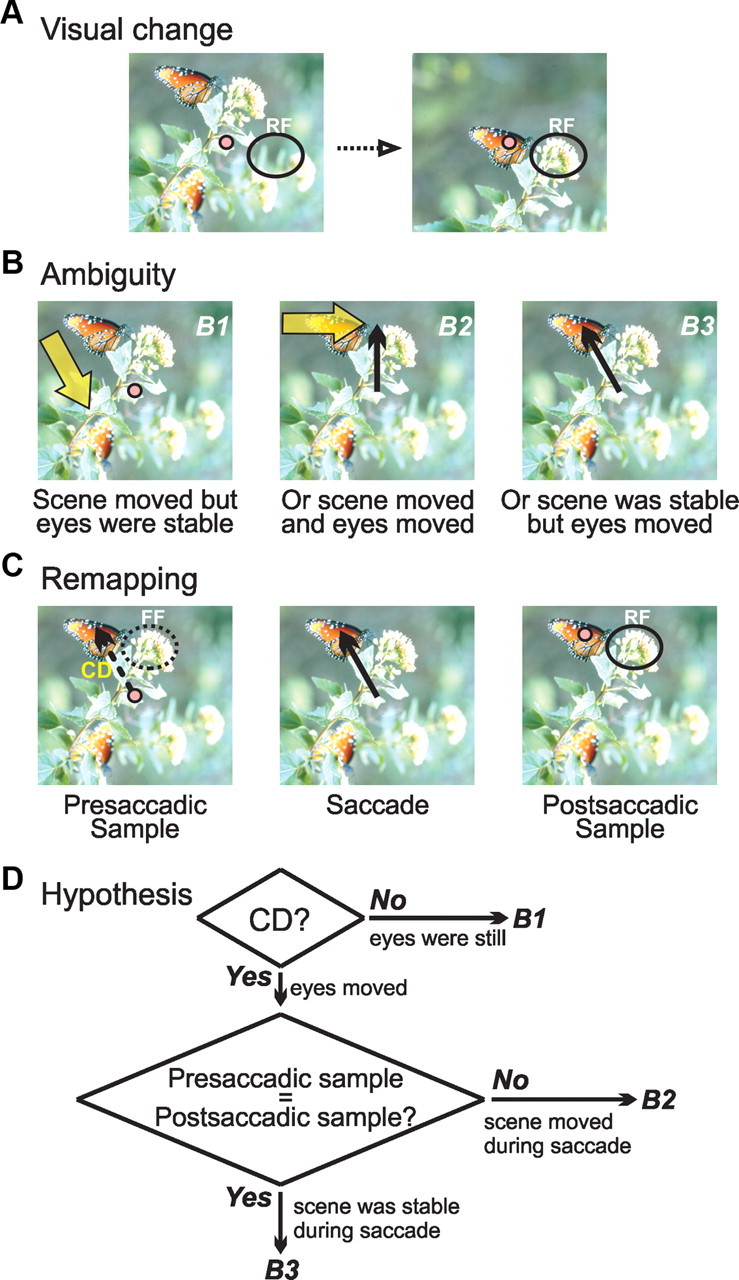Figure 1.

Disambiguating the reasons for image translation on the retina. A, Visual change in a neuronal RF resulting from image translation on the retina. B, Because both the eyes and scene may move, the underlying cause of the visual change is ambiguous. B1, The change may have been caused solely by movement in the scene, e.g., a gust of wind that brought the flower and butterfly down to the level of fixation. B2, Or it may have been attributable to a gust of wind from the left plus a saccade to the flower. B3, Or it may have been caused solely by a saccade (to the butterfly). C, Presaccadic remapping in the central visual system. Using corollary discharge (CD), a neuron that remaps will sample the same region of the visual scene before a saccade [in the future field (FF)] and after the saccade (in the RF). D, Hypothetical algorithm for disambiguating the cause of visual change using corollary discharge and presaccadic remapping. Outcomes B1, B2, and B3 refer to the potential causes of retinal image translation shown in B. Our study tests a central prediction of this hypothesis: that neurons report whether visual objects remain stable, or move, during a saccade.
